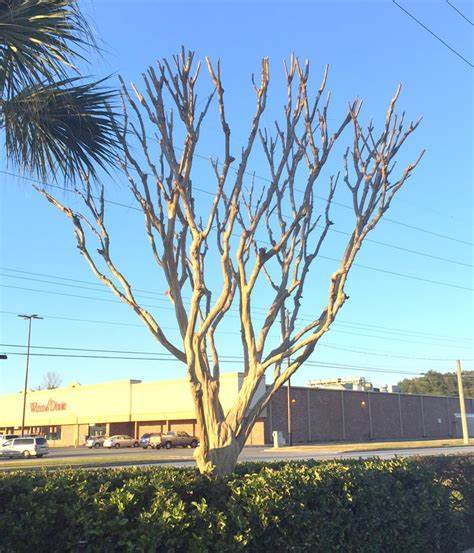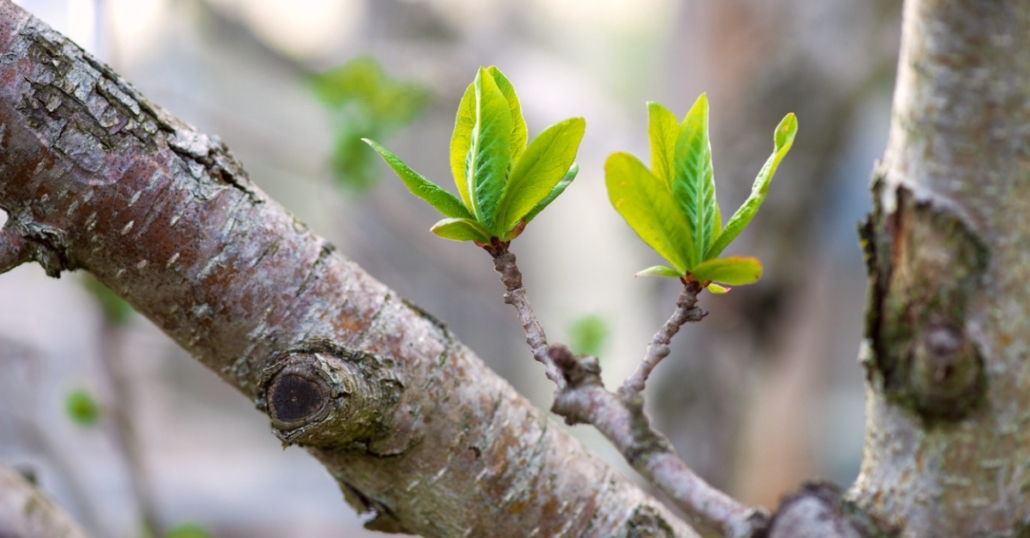One of the most glorious signs of spring is seeing bare winter branches become adorned with fresh new leaves. But the exact timing of when leaves return can vary depending on location, climate, and tree species. Read on to learn more about the factors that influence spring leaf growth.
What Triggers Leaf Growth?
Trees sense spring’s arrival through two key seasonal changes
-
Warming temperatures – After a sustained cold period, warming daytime temperatures initiate new growth.
-
Increasing daylight – Longer days and shorter nights spur development.
Once these conditions occur dormant leaf and flower buds begin to swell and expand. The protective bud scales fall away as new leaves start emerging.
Regional Differences in Leaf Out Times
Spring leaf out times can range over a period of 2-3 months depending on where you live:
- South – Mid March to early April
- West – Mid April to early May
- Midwest – Mid to late April
- Northeast – Late April to mid May
The warmer the climate, the earlier trees leaf out. Southern trees don’t stay dormant as long as those adapted to colder northern zones.
Variation Between Tree Species
Not all trees leaf out at the same time even within the same region. Here are some examples:
-
Early leafing trees – Birch, willow, magnolia, mulberry, flowering fruit trees
-
Mid-season leafers – Maples, poplars, elms, buckeyes
-
Late leafers – Oak, hickory, ash, beech
Early leafing species maximize their growing season. Late leafing trees avoid exposing new growth too soon.
Signs of Healthy Leaf Development
-
Plump, green buds – Indicates leaves are alive inside and just waiting for right conditions.
-
Gradual leaf emergence – Steady leaf growth over weeks is better than fast.
-
No leaf curling or wilting – Leaves should smoothly unfurl, not appear damaged.
-
Full canopy by early summer – Tree should be fully leafed out within 6-8 weeks of first buds opening.
What If Leaves Aren’t Developing?
If your tree seems significantly behind neighbors in leafing out, look for these potential causes:
-
Root damage – Construction, drought, or flooding can impair root function.
-
Trunk injury – Damage from past storms, animals, or equipment.
-
Poor pruning – Overpruning stresses trees and reduces leaf buds.
-
Disease or pests – Fungal infections, borers, and other problems take a toll.
-
Pollution – Road salt, contaminants, and soil compaction hinder growth.
-
Age – Some old or declining trees have slower growth.
Caring for Trees During Leaf Out
Here are some tips for supporting healthy spring leaf development:
-
Water young or transplanted trees especially well until fully leafed out.
-
Apply mulch to protect surface roots and retain moisture.
-
Prune only necessary branches—avoid heavy pruning in spring.
-
Consult an arborist if your tree looks damaged, stressed, or shows limited leaf growth.
-
Rule out and treat any diseases or pests found on buds, twigs, or opening leaves.
-
Stake/train new saplings to grow straight and avoid wind or limb damage.
The Rewards of Spring Leaves
While the exact timing varies, we can count on leaves returning each spring to work their magic:
-
Producing food via photosynthesis to fuel growth.
-
Creating cooling shade during hot weather.
-
Filtering air pollutants and dust.
-
Enhancing property values with green landscapes.
-
Providing wildlife food and shelter.
-
Boosting moods with their beauty!
Enjoying the renewal of leafy springtime is one of the simple joys nature brings.
How Do Trees Leaves Know When To Bloom/Leaf Out?
The weather getting warmer, the days getting longer with more sunlight, the soil getting warmer, and nutrients in the soil are some of the things that tell tree leaves to wake up and leaf out. When these signals come together, they cause an internal change that tells the tree or shrub to grow new leaves and take advantage of the good growing conditions.
Tree Leaves Not in Bloom?
Around our area, the earliest blooming/leafing trees typically begin to leaf out around mid to late March, according to the USA National Phenology Network.


Pruning and Defoliation 101 – Top 10 Tips Every Grower Should Know
FAQ
In which season does new leaves grow?
What month do trees grow the most?
How do leaves grow back on trees?
How long does it take leaves to grow back?
When do leaves grow back on trees?
So, leaves typically start to grow back on trees as early as March but can remain dormant until May. It depends on the tree type and climate it is used to in its area. The trees most likely to grow leaves sooner rather than later are the ones more adapted to warmer climates, as they don’t remain dormant for long.
Why does a lipoma grow back after removal?
If a lipoma is removed well/entirely, it usually does not recur. However, if any cells are left behind, it causes re-growth of the lipoma. Also, removal of lipoma from one site does not guarantee that lipoma won’t occur at any other site in the body.
Do ash trees grow back leaves in March?
Ash, Beech, and Oak are typically the first trees to begin to grow back their leaves as they wake up from their winter slumber in March. It doesn’t take much time at all for the leaves to bloom once they begin growing again. Do Trees from Warm Areas Grow Back Leaves Sooner? Yes.
When do trees start blooming?
Resources: Seasonal Tree Care Around our area, the earliest blooming/leafing trees typically begin to leaf out around mid to late March, according to the USA National Phenology Network. Spring 2020; however, has brought early spring weather causing trees and shrubs to leaf out and bloom on average 24 days earlier than normal.
Will my hair ever grow back if I have alopecia?
In most people, new hair eventually grows back in the affected areas, although this process can take months. Approximately 50 percent of people with mild alopecia areata recover within a year; however, most people will experience more than one episode during their lifetime.
Why do deciduous trees lose their leaves?
Deciduous trees are trees that lose their leaves at some point during the winter. These trees, especially fruit trees, require a period of dormancy brought about by colder temperatures in order to thrive. Deciduous tree leafing problems are common and can evoke anxiety in homeowners who become fearful that their favorite trees will not recover.
- A Complete Guide to Caring for Yuki Cherry Blossom Shrub - January 23, 2025
- Identifying Red Hot Poker Seeds: What to Look For When Harvesting Torch Lily Pods - January 23, 2025
- A Complete Guide to Harvesting Evening Primrose Seeds - January 23, 2025

